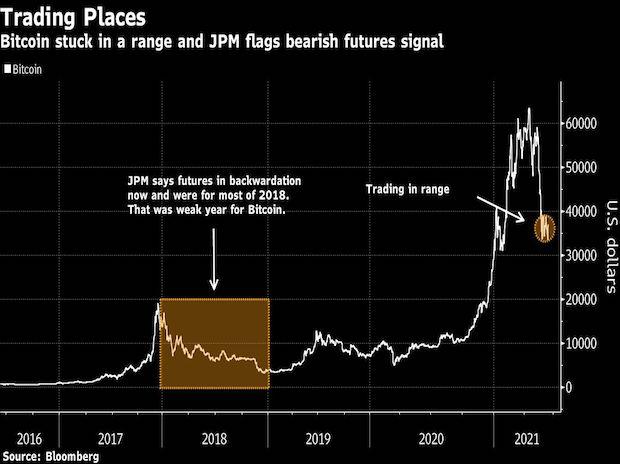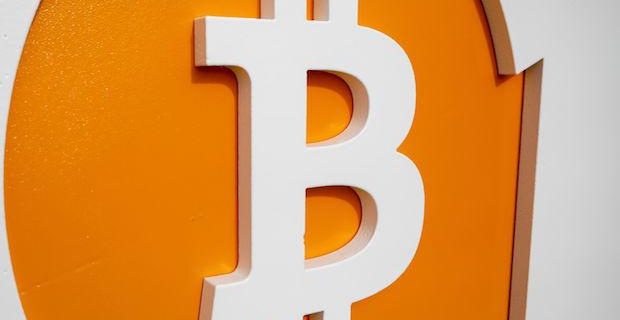Bitcoin's recent bounce has yet to dispel doubts about its vulnerability.
The cryptocurrency has jumped 10% over two days and was trading at $36,993 as of 9 a.m. in London on Thursday. While the momentum may cheer bulls, a JPMorgan Chase & Co. team said backwardation in the futures market — where the spot price is above futures prices — is a reason for caution.
“We believe that the return to backwardation in recent weeks has been a negative signal pointing to a bear market,” JPMorgan strategists led by Nikolaos Panigirtzoglou wrote in a note. They added that Bitcoin's relatively depressed share of total crypto market value is another concerning trend.
Traders are waiting for the next catalyst to break Bitcoin from a $30,000 to $40,000 range that's been in place since a collapse from a record of almost $65,000 in April. Public criticism of the digital currency's energy needs by tycoon Elon Musk and a Chinese regulatory crackdown are among obstacles. Bulls got a bit of a lift Wednesday after El Salvador made Bitcoin legal tender.
ALSO READ: El Salvador becomes first country to adopt Bitcoin as legal tender
The virtual currency “needs to push into $39,460 and the top of the recent range to really attract, but we will need to see a break here for the bulls to feel we're out of this period of vulnerability,” Chris Weston, head of research with Pepperstone Financial Pty, wrote in a note Thursday.

The June 9 analysis from JPMorgan looked at the 21-day rolling average of the 2nd Bitcoin futures spread over spot prices. The backwardation this showed is an “unusual development and a reflection of how weak Bitcoin demand is at the moment from institutional investors” who use contracts listed on the Chicago Mercantile Exchange.
The Bitcoin futures curve was in backwardation for most of 2018, a year when the cryptocurrency fell 74% after a spectacular boom, JPMorgan said.
ALSO READ: Bitcoin believers have nothing to worry about; their crypto is here to stay
Meanwhile, Bitcoin's share of the overall crypto market value is 42% currently, down from roughly 70% at the start of the year, according to data from tracker CoinGecko. For some analysts, that's in part a sign of retail-driven investor froth lifting other coins.
Bitcoin's share may need to top 50% to make it easier to argue the current bear market is over, the JPMorgan strategists said.






